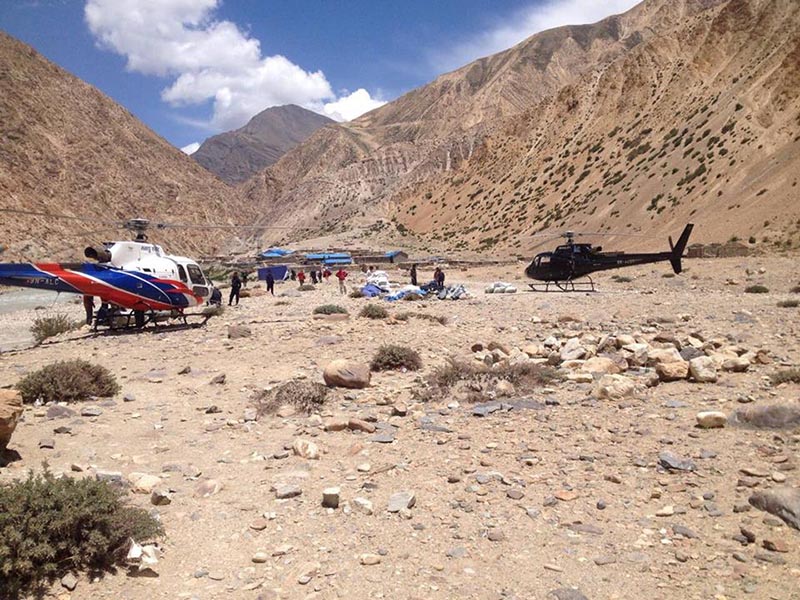Helicopter operations safety requirements blissfully ignored
Kathmandu, August 16
Helicopter operations have been making headlines for all the wrong reasons in Nepal for some time now.
Notably among the recent cases are the helicopter mishap on top of Grande Hospital and the dubious roles of heli operators in the fake rescue scam and now that of a fatal incident at Hilsa where an Indian pilgrim made a fatal contact with the tail rotor of a Manang Air chopper.
“These incidents have clearly revealed that provisions under the flight operations requirements exist in name only. Neither the operator is serious about complying with the requirements nor the aviation regulator is intent on enforcing them,” said a senior captain YK Bhattarai.
Unlike the developed countries where helicopter operators may be non air-operator certificate holders, all Nepali operators are licensed to operate commercially by the state aviation regulator – Civil Aviation Authority of Nepal, the captain mentioned.
The AOC is formal certification by the state that the operator is fully qualified to meet the safety objectives in line with the stipulations of the International Civil Aviation Organisation at the minimum. Besides, the certification also implies that the operator’s business plan does indeed suffice to stay out of red and thereby remains healthy to service its safety obligations, according to the ICAO.
The flight operations requirements-helicopters clearly states under chapter 2 that the issuance and continuation of the AOC is dependent on the operator demonstrating an adequate organisation, method of control and supervision of flight operations, training programme as well as ground handling and maintenance arrangements consistent with the nature and extent of the operations specified.
Additionally, the requirements also list the responsibilities of the pilot-in-command of the helicopter for the operation and safety of the helicopter and for the safety of all crew members, passengers and cargo on board, from the moment the engine(s) are started until the helicopter finally comes to rest at the end of the flight, with the engine(s) shut down and the rotor blades stopped.
Interestingly, the FOR-(H) under section 2.2.1.8 states that ‘systems for both the certification and continued surveillance of the operator have been established by the director general at CAAN in accordance with ICAO Annexes to ensure that the required standards of operations established in 2.2 are maintained.’
“Especially, the Hilsa incident has clearly disclosed that FOR provisions exist in name only,” another senior captain said, adding that this was happening while Nepal continues to be on European Commission’s radar and the minister for culture, tourism and civil aviation remains hopeful of an early exit from the unceremonious list.
The reckless manner in which helicopters are operated, including frequent hot-refuelling — refuelling with rotors running — is very well known to the CAAN higher ups and can be witnessed first-hand at Lukla and Simikot, which are manned stations, he added. “No safety reports to the effect emanate to reach the aviation supervision bodies in the name of safety management,” a CAAN official admitted.
On the other hand, CAAN air safety inspectors are busy as usual, only finding time to visit aviation training and maintenance facilities abroad at operator’s expenses and therefore unable to spare time for thorough surveillance at stations like Hilsa, that witnesses a seasonal surge in helicopter operations on account of Indian pilgrims bound for Mt Kailash, the official added.






